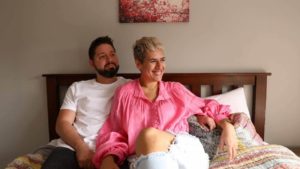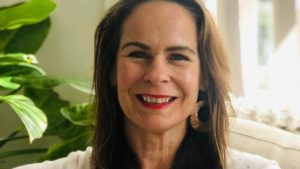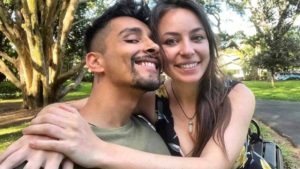Published on stuff
By Vivien Beduya
0:500, May 01 2022
Romancers on Tinder will find a melting pot of ethnicities, but cross-cultural couples may struggle with prejudice and combining families. Vivien Beduya meets couples who’ve overcome differences to fall in love.
When Jake Pancho was growing up, there were only two Filipino kids in his school.
When it came time to date, the New Zealand-born Filipino says the pool was mainly Pākehā-Kiwi girls.
“The stereotyping of Asian guys and size did affect my early years of dating,” Pancho says.
Meanwhile, Pancho’s Filipina wife, Mariel Pancho, says in her past relationship with a Pākehā-Kiwi, she faced accusations of a brutal stereotype: only being after his house and money.
“It’s a bit awkward. I’m going out with [him] because of his house? I’m actually just genuine,” Pancho says of the moment this was put to her.
In New Zealand, where our population is becoming more diverse, interracial couples who talked to Stuff say their partners have helped them grow by challenging their personal views, and embracing the richness of what each culture has on offer. But to get there, they’ve overcome racial prejudice, instilled through an intersection of family, media, and society, as well as other complexities of interracial dating.
While dating apps help some find love, they’re often criticised for how heavily they involve matching or unmatching based primarily on looks, with some users explicitly stating ethnic or racial preferences in their bio. Some studies have shown Asian men are more likely to be single, and that many would-be daters use filters to exclude seeing other ethnicities.

Lania Leano-Lesavua, who is Fijian PÄkeha, and Alejandro (Alex) Bonfil, Mexican Hispanic, both 29.
Overseas, the New York Times reports that interracial couples in the US, particularly when one is Black, face important conversations early on about discrimination – with the recent killings of George Floyd, Ahmaud Arbery, and Breonna Taylor at a forefront.
As for Pancho, although he dated outside his Filipino culture, none of those relationships succeeded because they weren’t open to embracing his culture, he says.
“[In] Filipino culture, we’re very family-oriented. It’s very normal to live with your family forever or have four families in one house.”
It was a red flag for him if dates or potential partners were not comfortable being around his family a lot of the time , due to differences in culture, food and interests. In a previous relationship with a Pākehā-Kiwi girlfriend, he says they faced differences in opinion about whether they would live with his family after they married.
He and Mariel believe interracial relationships work if both people are open to meeting each other halfway. When Pancho was ready to settle down, he matched with Mariel on Tinder, his first time dating someone of the same ethnic background. He still remembers telling his brother that he matched with a Filipina, and his brother encouraged him to try it.
“It was just easy. She just integrated with my friends and family.”
The pair were in a committed relationship for five years before they married in 2019, and they’re expecting a baby girl in the next few months. They hope they can raise their daughter in a more culturally accepting society, instilling both Filipino values and Kiwi culture.
There is no disputing their daughter will grow up in a more multicultural Aotearoa. In a 2015 ‘diversity stocktake’ report presented by prominent lawyer Mai Chen, Tāmaki Makaurau was projected to have Asian, Māori and Pacific populations outnumber Europeans by 2038.
The study cited that the culture and values of residents would not just be the culture of their home countries or Kiwi culture, but a blend of both due to high levels of immigration and interracial marriages.
“This means that New Zealand is experiencing, and will continue to experience, a cultural revolution,” Chen wrote.
In Auckland, one in every four is born overseas – but a recent survey also suggested Aucklanders were more likely to suffer discrimination because of their names, accent, or their birth country.

While previous studies have shown ethnic intermarriage is common in Aotearoa amongst Māori, Pasifika and Asians, especially amongst those born in New Zealand, they also found that intermarriage was relatively uncommon amongst Europeans.
Although one 2014 study caveated that it wasn’t suggesting Europeans were averse to intermarriage, due to its sample size, Two’s Company dating agency owner Sasha Madarasz thinks differently.
Two’s Company has had over 6000 people on its books since it opened in 2003, the majority of whom are European, she says, with about 5% of her client base aged between 25-35. She says this group is slightly more ethnically diverse compared to the over 45 age group.
At initial client meetings, one of the first questions she asks is if they are open to meeting people of other ethnicities.
She says most younger Pakeha Europeans say no, making it difficult for her to match Asian clients who only want to meet Europeans.

Sasha Madarasz owner of Twos Company.
If you’re single dating apps like Tinder provide a melting pot of different cultures, particularly in the major cities. Latest Census figures, albeit from 2018, show the population of Asians, Pasifika, and Middle Eastern, Latin American and African growing. The Latin American population had tripled. The border reopening paves the way for tourists to finally return to New Zealand, with some potentially settling permanently.
This means a chunk of the population carries varied lived experiences a New Zealand born Kiwi would typically not have been exposed to – like being fluent in two languages.
Lania Leano-Lesavua, a Fijian Pākehā, would forget in the early stages of her relationship that her Mexican Hispanic husband, Alejandro (Alex) Bonfil, is fluently bilingual.
The way they say and hear words, the way they think about sentence structure, and the tone and inflections in language, is very different – especially when they argued.
“Although Alex is fluent in English, the way he processes what I’m saying or how he answers a question, is a different way than how I am thinking of it,” Leano-Lesavua says.
It was a learning curve for her to be more empathetic, the same way Bonfil understood she struggled to get what he would say sometimes.
“It’s not a language barrier, it’s a thought process barrier.”
She recognises the struggle for bilingual people who process their thoughts in their native tongue then translate that in real time conversation. She says if single-language speakers would be more empathetic to their bilingual friends and partners, they will find that the barriers they thought were there, aren’t.
On the flip side, what if both couples are fluently bilingual, but with their native tongue being different?

French immigrant, Anaëlle Cocherel and Indian-Kiwi, Vishwajeet (Zayn) Kumar.
Vishwajeet (Zayn) Kumar, who moved to Aotearoa with his family from India when he was 12, says that language is also something he found challenging with his French immigrant partner, Anaëlle Cocherel.
Cocherel and Kumar’s story is also a Tinder romance. As Cocherel tells it, they instantly had a deep connection on their first date, and says it was refreshing to meet a man who was very emotionally open – she attributes this to his culture.
“There was no trying to be the man, or any kind of toxic masculinity, and you can talk to him about anything,” Cocherel says.
Cocherel and Kumar say being in an interracial relationship opened their worlds with the richness of their own cultures. While Cocherel struggled to keep up with the Indian culture and customs, she loves how family oriented his family is.
She wells up in tears talking about how Kumar’s mother would always greet her with a tight hug and call her my beta, which means baby in Hindi. This is a level of closeness she had not experienced with her own mother due to the individualistic culture in France, she says.
When Cocherel is with his family, Kumar translates in Hindi so she feels included. He knows he would be on the receiving end of the translations once they visit France to meet her friends and family, and would love for them to learn each other’s languages.
In Leano-Lesavua’s dating experience, she had never found the kind of connection and openness that came naturally with Bonfil, which was very refreshing for her. They bonded over their love for Marvel movies on Tumblr aged 20, when Bonfil was based in Texas, USA, and Leano-Lesavua in Auckland.
They started a long-distance relationship, only ever meeting in person after a year of dating when Leano-Lesavua flew to the States to meet Bonfil. They have been together for eight years and married for six, and own a house on Auckland’s North Shore.

Couples Stuff spoke to say their relationships are stronger because of their cultural differences.
They say being in an interracial relationship challenges their ways of thinking and opens their lives up to new experiences. They believe it’s important for their growth as both individuals and as a couple.
Bonfil says he learned to question his beliefs on gender roles.
“I break my own brain, often thinking I need to start being the sole provider. Especially when I first moved here, I blamed myself for our monetary shortcomings, because I just started on a factory job with a minimum wage,” he says.
He realised he had internalised shame due to cultural expectations of what was expected of a man and that there is nothing wrong with both partners contributing, as long as you are constantly communicating.
Leano-Lesavua is not so hard on him: “Relationships struggle when there is no growth, people become stagnant and bored. I never feel that way with Alex.”